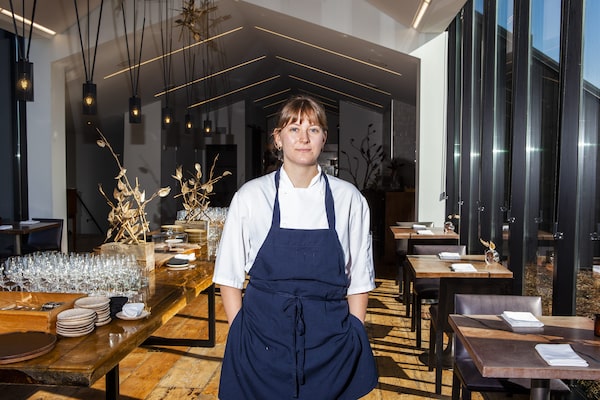
Pastry chef Kailey Vettor of Restaurant Pearl Morissette in Jordan Station, Ont., which uses ingredients grown using regenerative farming techniques.Sarah Palmer
You may have heard the term ‘regenerative agriculture’ in the context of the restaurant industry and wondered what it means.
“I’d say the intention behind the definition of regenerative farming would be to contribute more to the land than is taken away,” says Daniel Hadida, chef and owner of Restaurant Pearl Morissette in Jordan Station, Ont.
Farmers can use techniques such as composting, cover cropping, shallow and reduced tillage, and crop rotation, according to Canadian Organic Growers, an organization that supports more ecologically based agriculture practices.
Hadida says the words ‘sustainable’ and ‘regenerative’ can be contentious if there’s an element of greenwashing, or unsubstantiated claims to deceive consumers into believing an establishment and its food are environmentally friendly. We’re likely a long way from a time when all restaurants will work with farmers who abide by true regenerative farming standards.
Hope is not lost: there are Canadian chefs who exclusively or mostly buy from local farmers who use regenerative practices because they consider it the right thing to do.
“Even in the past three years, people are just talking about this more and – not to be blunt – but giving a sh--,” says Ruby Gatt, head chef at L’Idéal in Montreal. “It’s [even] just small things that we can do in restaurants to make the change … The pandemic was really a turning point for our industry. People took the time to slow down and try to put new systems into place.”
Gus Stieffenhofer-Brandson, executive chef of Published on Main in Vancouver, says there’s an important added benefit: “Farmers that take the best care of their soil and environment tend to have the most delicious fruits and vegetables.”
Three fine-dining chefs agreed to share the ingredients from their favourite dishes to illustrate how regenerative agriculture looks on their plates.

Ruby Gatt, head chef at L'Idéal in Montreal.Sylvie Li
The chef: Ruby Gatt, head chef, L’Idéal, Montreal
The dish: Burrata and mushrooms
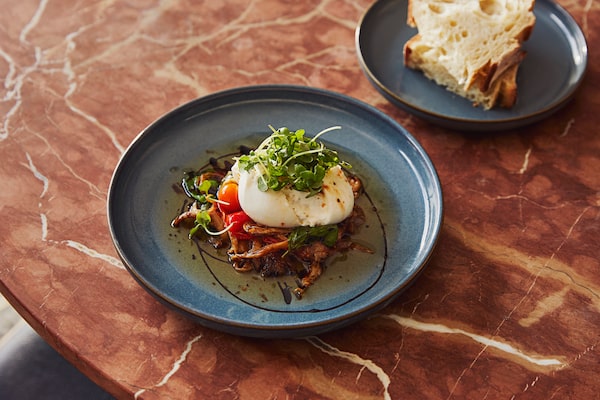
Burrata and mushrooms. The dish can be eaten on its own, but it comes with some bread.Sylvie Li/The Globe and Mail
What’s on the plate: “So, it’s a burrata with mixed oyster mushrooms. We get the burrata from a couple different spots. The one I primarily use is called Hamel. The oyster mushrooms are coming from an urban farm called Full Pin. Mushrooms could arguably be one of the most regenerative things you can grow. And then there’s cherry tomatoes, garlic, basil. They come from a place called Chez Nino. They are kind of the link between the farms in Quebec to restaurants. When we can get it, the dish also has a wild grape balsamic. It’s foraged here in Quebec. And then there’s some flaky salt on top that comes from the St. Lawrence River. You can eat the dish on its own, but people here love their bread. I get the bread from a bakery called Guillaume.”
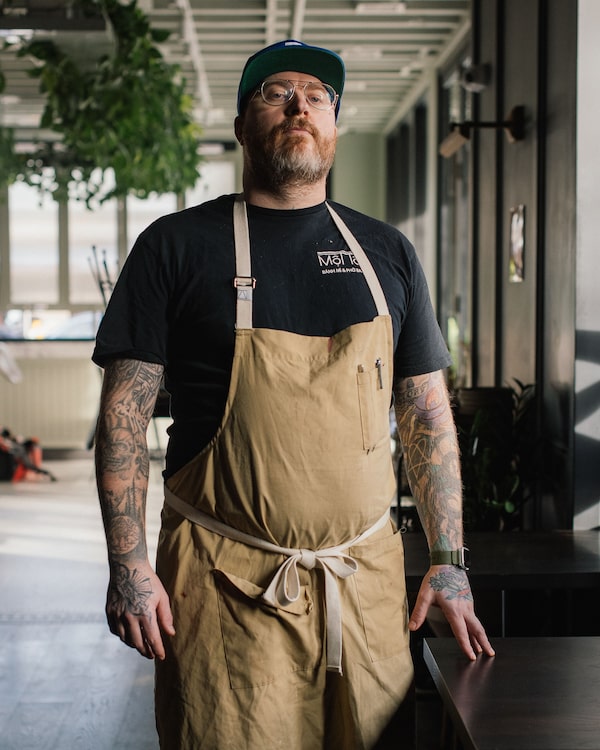
Gus Stieffenhofer-Brandson, executive chef of Published on Main in Vancouver.Alana Paterson
The chef: Gus Stieffenhofer-Brandson, executive chef, Published on Main, Vancouver
The dish: Winter squash
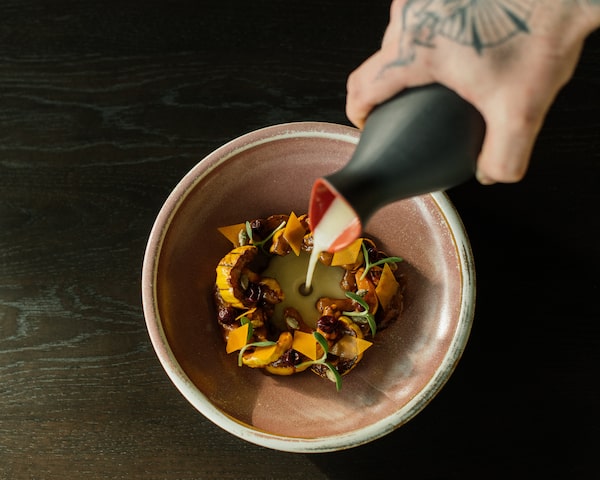
Winter squash. The dish is brought together by a lacto-fermented koji butter sauce.Alana Paterson
What’s on the plate: “We roast winter squash. I prefer delicata, but we have used butternut, honey boat, carnival and acorn. We buy any squash from pretty much every local farm we work with – Zaklan, Glorious Organics, Hazelmere, et cetera – as long as they are available. After the squash is nicely coloured and cooked through, we glaze it in a pepita miso sauce. We make the miso from the squash seeds, house-made koji and season that with ginger, garlic, rice-wine vinegar and brown sugar that’s all bought locally. We garnish this with candied squash seeds, fermented black currant from Taves Family Farms and slices of pickled squash. We add sunflower shoots from Barnston Island to add a bit of freshness. The whole dish is brought together by a lacto-fermented koji butter sauce. It’s the same koji we use to make the miso.”
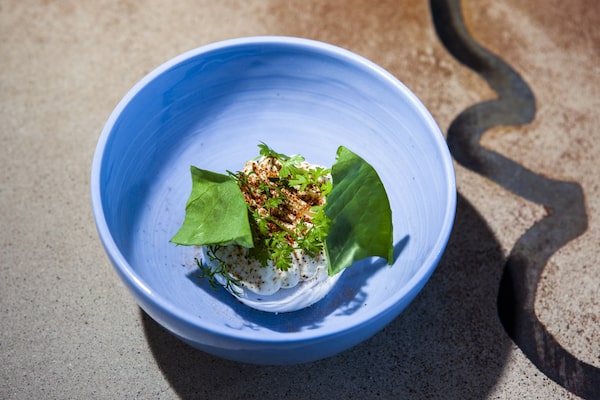
Sweetgrass dessert, plated by Kailey Vettor of Restaurant Pearl Morissette in Jordan Station, Ont.Sarah Palmer
The chef: Daniel Hadida, chef and owner, Restaurant Pearl Morissette, Jordan Station, Ont.
The dish: Sweetgrass
What’s on the plate: “This year in Niagara was an absolutely fantastic season for raspberries because we had a cooler, wet summer. We’ve got a farm right around the corner from us called Johnson Farms; we preserved a ton of the raspberries they brought us and we make sorbet from them. Sweetgrass we grow in our garden. It’s a native perennial grass and it has a really beautiful aroma, kind of reminiscent of vanilla or tonka bean. We infuse that into cream, which is used to make a yogurt mousse. The meringue is made from eggs from our chickens, the lemon thyme comes from our garden, the dill and chervil come from the greenhouse. The sorrel comes from this massive French sorrel plant that we grow. The yarrow is still in the garden because yarrow will outlast every apocalypse.”
One in a regular series of stories. To read more, visit our Inspired Dining section.